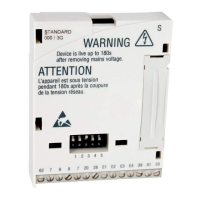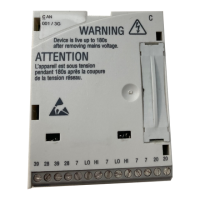Appendix
Data transfer
9
l
54
EDS82ZAFVCxxx EN 4.0
Two different telegram types are transferred between master computer and controller(s):
ƒ I/O data
ƒ Explicit messages
As indicated in the table, these telegram types are subdivided into communication
channels according to their time−critical response:
Communication channel Telegram type
à Parameter data channel
à Explicit messages
Explicit messages are used for configuration and parameter setting
of the devices connected to the DeviceNet. The relationship
between two devices is a client−server relationship. The client
sends the request and the server accepts the order and tries to
settle it. The server reacts as follows
l the required data in case of a positive response or
l a fault message in case of a negative response.
l Enables the access to all Lenze codes.
l Automatic storage after a change of
frequency inverter parameters:
– 8200 vector
– 8200 motec
à Process data channel
– You can control the controller using
the I/O data.
– The master computer can directly
access the I/O data. The data is
directly stored into the I/O area of the
PLC.
– I/O data is not stored in the controller,
they are cyclically transferred
between the host and the controllers
(continuous exchange of input and
output data).
à I/O data
I/O Data (process data) is transmitted/received according to the
producer/consumer principle, i. e. there is one transmitter and no
or an arbitrary number of receivers.
The following transmission modes are supported:
l I/O polled messages (polled)
– The Poll command being transmitted from the master,
includes output data for the slave. The slave then transmits
its input data to the master.
l Cyclic I/O
– With cyclic I/O, master and slave create data independently of
each other which are sent according to the settings of a
timer. The user must set the timer.
l Change of State (COS)
– This type of I/O message is a special cyclic message. COS
nodes send their data when the data status is changed.
) Note!
The default message service for the E82ZAFVC function module is the I/O
polled message. Other services can be released by means of a DeviceNet
Manager tool.

